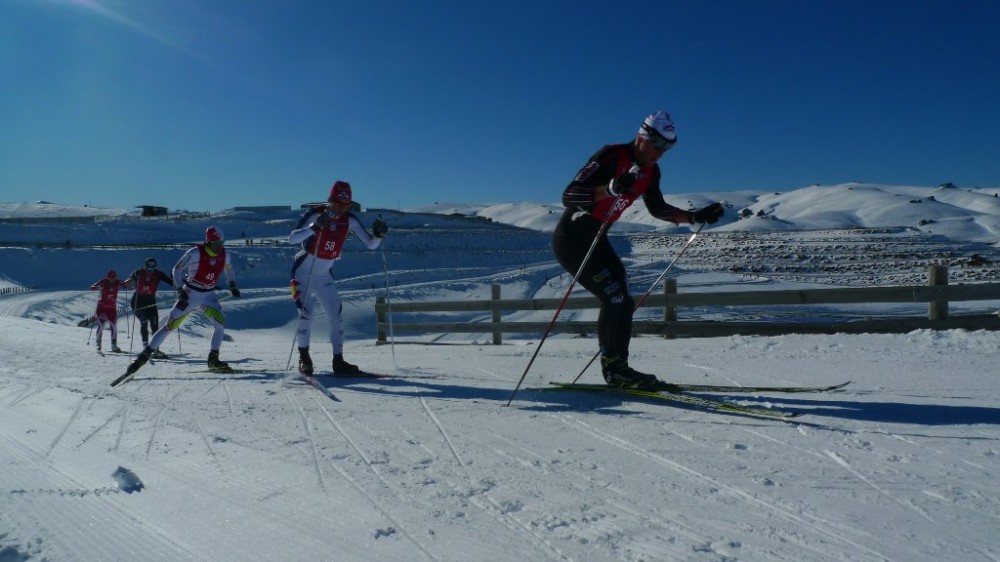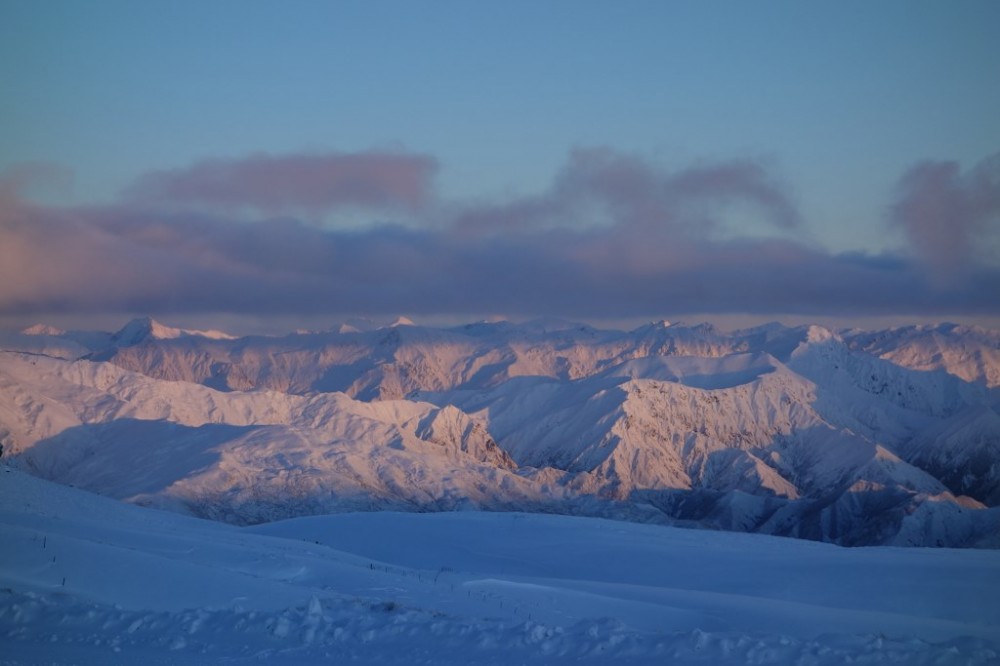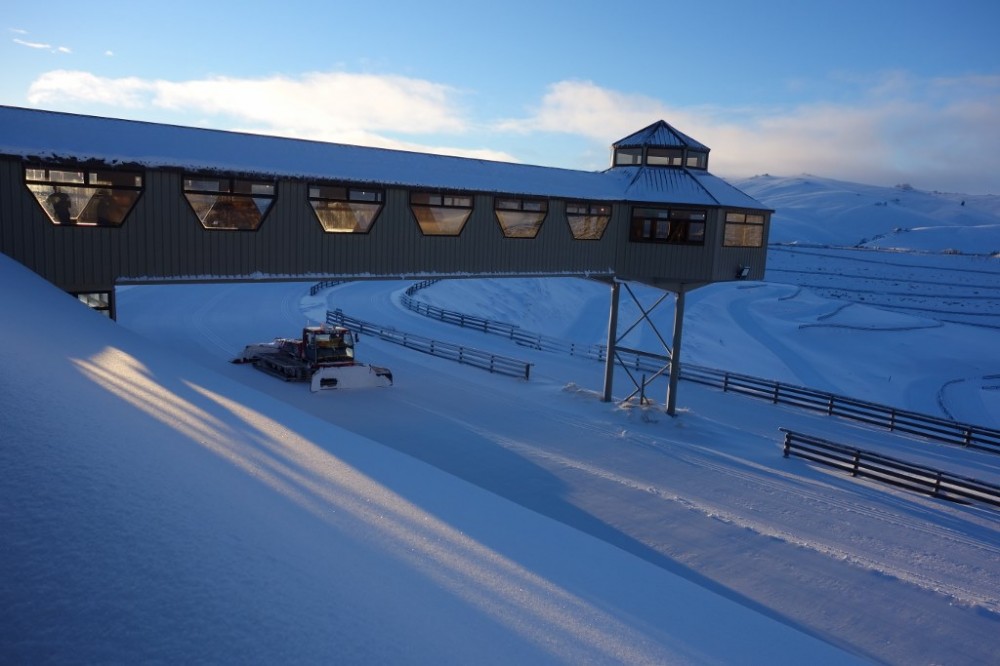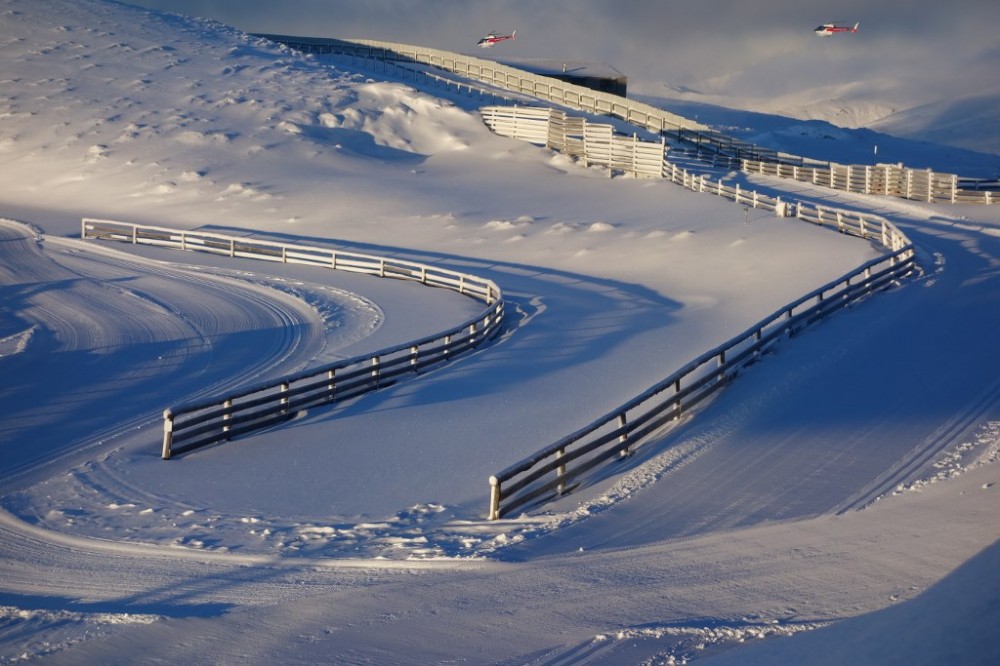
Noah Hoffman isn’t one to take his training lightly. The way he sees it, a serious-and-dedicated plan will allow the the 25-year-old U.S. Ski Team (USST) member to achieve his lofty career goals, which include winning an Olympic gold medal and an FIS World Cup Distance Globe.
Given his driven nature, Hoffman is willing to venture outside the standard USST plan in order to bolster his training and address what he’s identified as his weaknesses.
This summer, that meant participating in a solo camp at New Zealand’s Snow Farm following the USST men’s camp in Alaska.
From Aug. 9 t0 Aug. 25, Hoffman had 15 full days of on-snow training at the Snow Farm in Wanaka, New Zealand. Over the course of his camp, he trained more than 50 hours.
For Hoffman, the decision to make the summer trip to New Zealand was easy. He’s been adding the trip to his training plan for the last three years and finds that the often-fast, hard snow is ideal for his technique work. This year, he said conditions were especially favorable.

“I had the best snow conditions that I’ve seen in any of my five years going there,” he wrote in an email. “I was hard-wax skiing the entire time and had 14 days of beautiful weather.”
Hoffman explained that his New Zealand trip served as an additional on-snow camp used to supplement the USST camp schedule. For the Colorado native, his continued on-snow training has helped him improve his technique.
“I think the additional on-snow time has been essential to the technique improvements that I’ve made in the last two years and is critical to my technique goals for this summer and beyond,” he wrote.
While Hoffman appreciates the value of North-American summer glacier camps, he found that New Zealand’s skiing better replicated winter World Cup conditions.
“Training at the Snow Farm is significantly more valuable than on-snow time on a glacier in the Northern Hemisphere,” he wrote. “Glacier skiing is slow and soft. It is a different type of skiing than we see at most venues in the winter.”
Often times during the race season, World Cup venues are hit with warm conditions and organizers salt the course to increase snow speed.
Even though Hoffman was the sole USST member to travel to New Zealand this year, his coaches and teammates who remained stateside were extremely supportive.
“They understand my goals and support the plan that my personal coaches and I believe is best for my training,” Hoffman explained.

While most of his training in New Zealand was spent alone, Hoffman was able to connect with Canada’s multiple-time Paralympic gold medalist Brian McKeever and one of his guides Graham Nishikawa for several training sessions. And when he wasn’t training, Hoffman spent meals with the Canadian Para-Nordic Team.
“That social activity was critical for me to stay happy down there,” he wrote.
Hoffman’s training also included the 2014 Merino Muster. The 42 k freestyle mass start took place on Aug. 16 and included several international competitors, such as Poland’s Justyna Kowalczyk.
Hoffman placed second, 11 seconds behind Poland’s Maciej Kreczmer.
While he would have liked to win the race, he wrote on his blog that he was happy with the outcome and that the race served as an excellent intensity workout.
“The goal is not to be good in August,” he wrote.
Hoffman also allotted time for some lighthearted charity work. With the help of his Canadian counterparts, he participated in the Amyotrophic Lateral Sclerosis (ALS) Ice Bucket Challenge, a social-media phenomenon intended to raise awareness and research funding for the illness, also known as Lou Gehrig’s disease.
Hoffman returned to the U.S. on Aug. 25, where he will continue the remainder of his summer training. This year he will sit out the USST Lake Placid camp in New York (taking place Aug. 26-Sept. 7), as his trip to New Zealand served as its replacement.
Reflecting on his summer, Hoffman said his training was “almost ideal,” citing his health, happiness, and technique improvement. Looking ahead, he feels prepared for the season ahead.
“I believe I’m really well set up to transition to higher intensity and more race-type fitness as the fall progresses,” he wrote. “I’m very happy and excited with the way things have gone.”

Lander Karath
Lander Karath is FasterSkier's Associate Editor from Bozeman, Montana and a Bridger Ski Foundation alumnus. Between his studies at Middlebury College in Vermont, he is an outdoor enthusiast and a political junkie.



